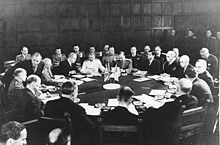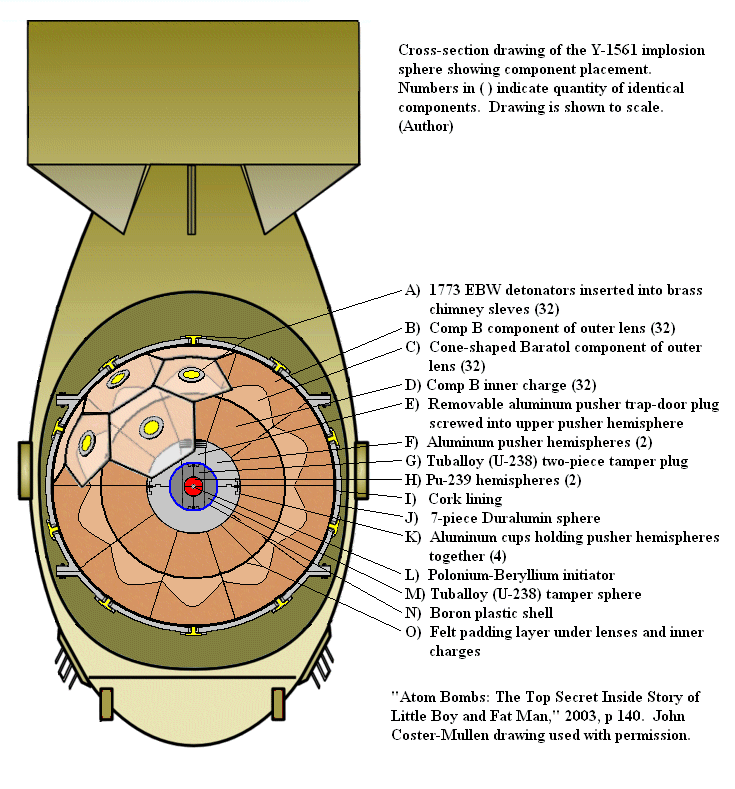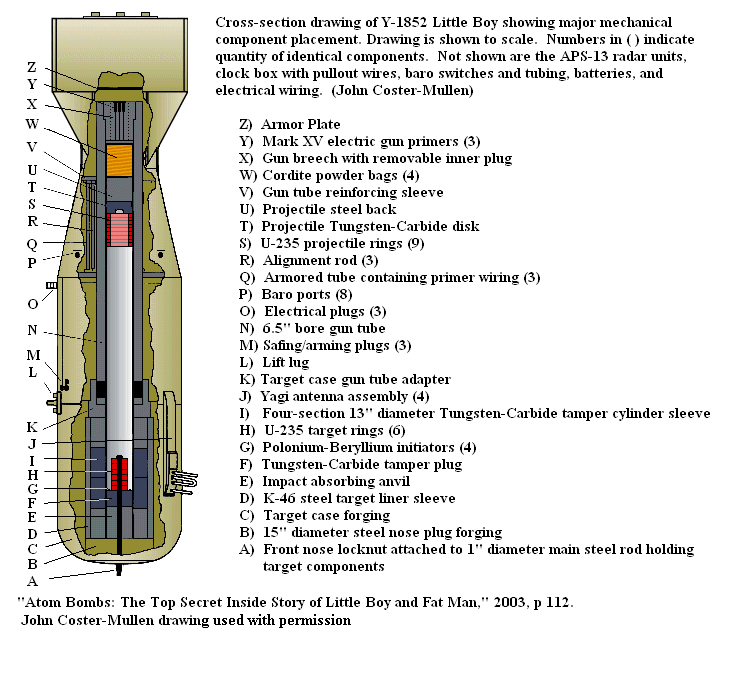After the rejection of the demand for unconditional surrender by the Japanse government in July of 1945, the United States President, Harry S. Truman, decided to drop an atomic bomb on the Japanese city of Hiroshima. During World War II, Hiroshima on the Japanse island of Honshu was home to several military bases and industrial facilities that supplied the Japanese war effort. There were headquarters of commanders of the Japanese home island defense force, assembly areas for troops, communication centers and other military targets. Five antiaircraft installations protected the city. There were some concreted buildings in the middle of the city but most of the homes, municipal buildings, barracks and factories were constructed of wood. The population of Hiroshima was estimated to be around three hundred and fifty thousand.
On August 6, 1945, the Enola Gay B-29 commanded by Paul Tibbets took off from an airbase on Tinian, one of the islands in the Northern Marians. The Enola Gay rendezvoused with two other B-29 bombers over Iwo Jima and they headed Japan. After hours of flight, the squadron arrived in over Japan and Captain William Parsons armed the uranium gun-type bomb known as Little Boy. The Japanese radar picked up the small fleet of American planes but did not activate air defenses for just a few planes. One of the accompanying planes flew over Hiroshima, reporting that the weather was clear and then turning out to sea.
Tibbets in the Enola Gay began his bombing run at 8 AM. The bomb was dropped at 8:15 from a height of about thirty thousand feet. After falling for about forty seconds, the bomb exploded at a height of about two thousand feet above the ground. The Enola Gay managed to travel about ten miles before the shock wave hit. The bomb missed that target by eight hundred feet and detonated over a clinic with a force of about sixteen tons of TNT with less than two percent of the uranium undergoing nuclear fission. The radius of total destruction was about 1 mile with fires spread over a radius of about four miles. The Japanese estimated that about seventy percent of the buildings in Hiroshima were destroyed. Around seventy thousand people or about twenty percent of the population were killed in the blast and firestorm with another twenty percent being injured. It is estimated that eventually about half the population of the city died from the immediate effects of the bomb or from radiation related illnesses in the years following the attack.
When communications with Hiroshima suddenly failed, the Japanese military were confused but they knew that no major air raid had taken place. They dispatched a plane to fly over Hiroshima to assess the situation. They saw a huge cloud of smoke of the devastated ruins of Hiroshima and were astonished by the destruction.
After the detonation of the first atomic bomb ever used in warfare, President Truman broadcast an announcement about the terrible new weapon that the United States possessed. He warned the Japanese that if they did not surrender immediately, they could expect “a rain of ruin from the air, the likes of which has never been seen on this earth.”
The Japanese government was still not ready to accept unconditional surrender. They were holding out for the following conditions:
- The preservation of the existing government
- Disarmament and demobilization to be carried out by the existing Japanese military
- No occupation of the Japanese islands
- Punishment for war crimes to be carried out by the Japanese government.
Hiroshima after the bombing from japanfocus.org:



